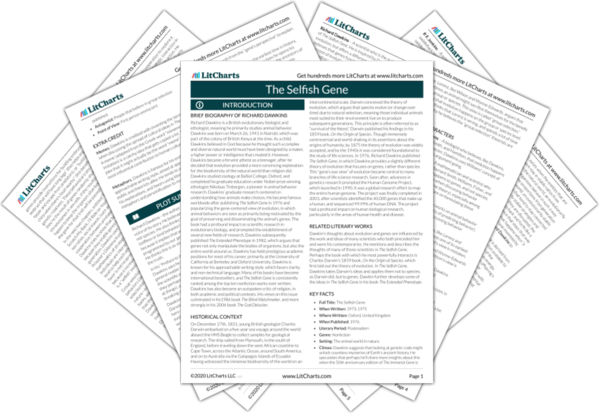Group selectionists like Wynne-Edwards argue that altruism exists in nature because animals regulate their birth rates to avoid overpopulation, which benefits the group (the evolving entity) as a whole. Dawkins, on the other hand, thinks that often, having few children keeps more of an animal’s genes in the gene pool than having many children. Once again, the gene’s presence in the gene pool (and not the group’s presence in the world) is being maximized. Since the behavior keeps more genes alive, there’s no self-sacrifice involved.


